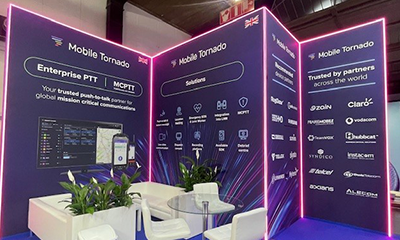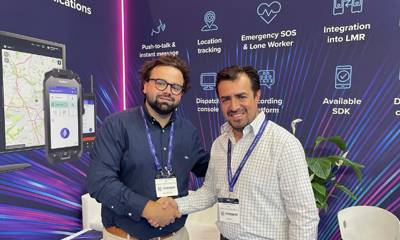Push to talk, push to message, push to locate, SOS emergency alerts, recording and more: users of Mobile Tornado technology can access a host of powerful features on a single device. Thanks to Steve Jobs, who unleashed the first iPhone back in 2007, consumers have strong expectations about mobile technology and what a device can do in 2023.
As cellular networks grow ever stronger, legacy radio providers are struggling to meet those demands. Once a cash cow for suppliers, their land-based systems are now seen as expensive, outdated and lacking in data capabilities and features, which often leave users juggling multiple devices for different functions.
The Apple founder didn’t invent the smartphone but he pioneered the model of the mobile device as a platform for an endless range of uses and applications. Consumers loved their new pocket computers, driving sales of more than 2.2 billion iPhone units since production began and changing the way we interact with each other.
The proliferation of devices, both iOS and Android, has spurred investment in network infrastructure. Global 4G coverage doubled to 88 per cent between 2015 and 2022. Industry experts predict that 5G networks are likely to cover a third of the world’s population by 2025.
This digital revolution means that mobile workers make up an increasingly important part of the global workforce, either as knowledge workers who base themselves in a single location or frontline workers who operate in the field. It is the latter group who face the biggest safety risks, particularly when they are working in challenging or dangerous environments. These workers stand to benefit the most from the increased safety that comes from the extension of data capabilities into every corner of the world.
Stronger enforcement of legislation has led to increased employer focus on the safety of lone workers. Organisations can harness powerful new mobile technologies to meet workers’ safety needs, reduce operating costs, enhance productivity and improve efficiency, as well as enabling workers to stay connected, at the push of a button, wherever they are located. For individuals, they can quickly access safety features on a single device without having to fumble around for different gadgets in challenging and fast-moving environments.
When lives are at stake, the technology to has to be robust and reliable. Mobile Tornado’s push-to-talk over cellular technology PTToC) is proven to be superior to competing technologies. The carrier-grade system availability is 99.999 per cent with voice transmission setup less than 0.5 second. The service delivers best-in-class, seamless switching between between 2G, 3G, 4G LTE, 5G mobile and WiFi net-works.
Mobile Tornado’s PTToC solution is device agnostic and available as smartphone app or it can be fully integrated to a range of devices. Partnerships with manufacturers mean users can choose from a growing ecosystem of rugged, screenless, field, vehicle mounted, tablet and bodycam devices. Mobile Tornado’s users can access a wide range of useful apps including push to talk, message, alert, locate, record, SOS and more, functions that make land-based walkie-talkies look like what they are: relics from the old world.




